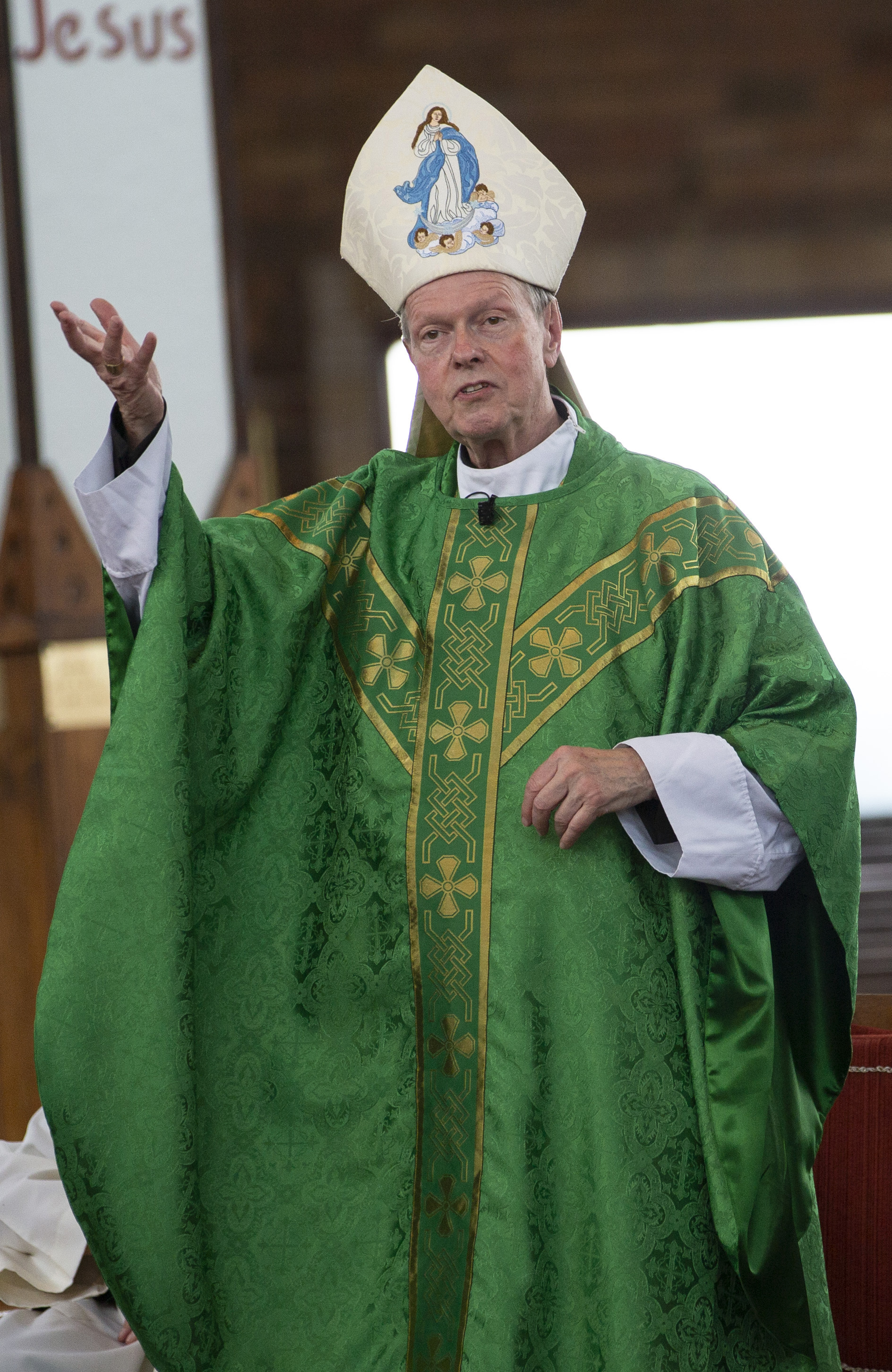April 6, 2018 at 1:53 p.m.
WORD OF FAITH
Meeting risen Jesus
In an interview with Diane Sawyer prior to the release of his movie, "The Passion of the Christ," Mel Gibson said he believed the Gospels were written by eyewitnesses of the events they narrate.
Though most Christians probably agree with him, no Scripture scholar does. Nothing has been passed down to us by anyone who personally knew the historical Jesus. Our evangelists, along with Paul and the other authors of the Christian Scriptures, knew only the risen Jesus.
That’s why Jesus’ last statement in Sunday’s Gospel (Jn 20: 19-31) is so important. "You became a believer," He tells the astonished Thomas, "because you saw me. Blest are they who have not seen and still believed."
Witnesses?
Along with Gibson, we’ve traditionally presumed that the "non-see-ers" are the readers of John’s Gospel, not the author. But if scholars are correct, Jesus’ words apply to every writer of the Christian Scriptures. Our biblical faith has been handed down to us not by the fortunate few who accompanied a prophetic carpenter on His preaching trips through Galilee and Judea, but by the many who recognized Jesus years after His resurrection, appearing to them in their everyday lives.
When it comes to believing Jesus is alive, we’re invited to trust people who never actually put their finger into the nail marks or their hand into His side. Yet they were just as certain about what they experienced as were Thomas and the rest of the Twelve 2,000 years ago on that Sunday evening in the upper room.
How did our Christian biblical authors surface the risen Jesus in their lives? The narratives which describe His appearances offer some clues. Notice Jesus’ statement, "As the Father has sent me, so I send you." Jesus’ first followers were convinced they were carrying on Jesus’ ministry. What He once did, they were now doing. The faith which motivated Him was motivating them. They were "other Christs." That’s why Luke in the first reading (Acts 5: 12-16) has no problem demonstrating how the early Christian community in Jerusalem was, like Jesus, met with mixed reaction. On one level, "people held them in great esteem." But, at the same time, "no one else dared to join them." When Christians imitate Jesus, they discover Jesus.
Jesus’ power
Peter, as a member of the community, even shares in Jesus’ miraculous power of healing. Knowing Jesus wants us to share in His ministry strengthens us to carry on that ministry and to recognize His presence while doing it.
See how much time the community spends with "the sick and those who were troubled by unclean spirits." Thomas’ desire to touch Jesus’ wounds mirrors the way most Christians come in contact with the risen Jesus – by touching the community’s wounded. Often, these individuals have been wounded by the very people now reaching out to touch them.
That seems to be why John’s newly risen Jesus makes a big thing about forgiving people’s sins. Unless we’re willing to forgive those who have wounded us, we’ll never experience Jesus living in them.
The author of Revelation (Rev. 1: 9-13, 17-19) also believes the risen Jesus’ guarantee that we’ll have new things to "see now and...in time to come." The risen Jesus never comes to us twice in exactly the same way. Though He’s the one unchanging force in our lives, He always manifests Himself in different ways in different people.
An openness to the new in our lives is required for discovering Jesus among us. It forces us to be constantly alert, always looking for Him, always reflecting on what’s going on around us.
Were Gibson corrected about the Gospel authors and being eyewitnesses, it would make faith in the risen Jesus easier, but far less challenging.
(04/15/04) [[In-content Ad]]
MORE NEWS STORIES
- Catholic Church holds firm on not taking stand on political candidates, despite possible IRS shift
- Ending TPS for Honduras, Nicaragua shows ‘no discernment,’ sparks fear, say experts
- Judge blocks, for now, Planned Parenthood defunding provision backed by bishops
- Walking, suffering with Texas flood victims crucial, says San Antonio archbishop
- Notre Dame prepares to reopen towers’ tour with return of famed statues of saints to rooftop
- NBC’s Tom Llamas says Catholic education deepened his faith, pushed him to always do his best
- Synod office provides guidelines to help local churches, bishops implement synodality
- Pope’s prayer intention for July: That the faithful might again learn how to discern
- Dalai Lama, iconic spiritual leader who has met popes and befriended presidents, turns 90
- Bishop Barron: Without an exception, WA abuse law violates religious liberty







Comments:
You must login to comment.